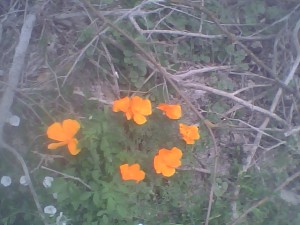SACRAMENTO – My friend Judy Liddell*, wise in the ways of bird travel, tipped me to be on the lookout for the yellow-billed magpie while I’m in northern California. She knows whereof she speaks. I saw my first one on the roof of my motel this morning as I ventured out for breakfast. They’re everywhere.
I’m staying a short walk from where the American River enters the Sacramento, and I ventured out after breakfast to look at the water. With a big snowpack, the rivers are running high, though that is not obvious to a visitor with no idea what normal is supposed to look like. The rivers are pinned between levees here, and I walked up through Discovery Park along the riverbanks to get a better feel. A fisherman I stopped to talk to said the place he was fishing – which looked like a big river side channel to me – is normally a creek. Closer examination showed bank shrubbery poking up through water. So yeah, high water.
Beyond the yellow-billed magpie, I saw a lot of great birds – Swainson’s hawk, double-crested cormorant swooping low over the river beneath one of the bridges as I crossed, a white-throated swift, western scrub jays that looked a bit different than ours (a brownish back). And of course the turkey vulture anchoring the scene, ever mindful of our mortality. I also saw people who live here casually embracing their rivers – fishing and boating and undergoing sophisticated preparations for Saturday afternoon barbecue by the water.
And California poppies, sign of the land of my birth.
* I’m reading the proofs of Judy and Barbara Hussey’s Birding Hot Spots of Central New Mexico, which is due out this fall. If you live in New Mexico, or are planning a visit, you’ll want this book, even if you’re not a birder. If you’re a birder, you’ll want it for sure, but their discussions of NM’s natural world are also delightful.



